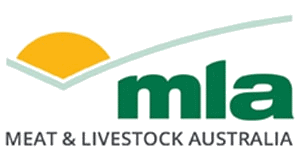Cost benefits of e-surveillance system
| Project start date: | 15 October 2008 |
| Project end date: | 22 February 2009 |
| Publication date: | 01 June 2011 |
| Project status: | Completed |
| Livestock species: | Sheep |
| Relevant regions: | National |
|
Download Report
(1.4 MB)
|
|
Summary
The concept of the E-Surveillance project arose from discussions between Meat and Livestock Australia, Australian Quarantine Inspection Service , the peak red meat industry producer councils, Australian Meat Industry Council and Animal Health Australia. There was general support for a better understanding of the costs associated with loss of production on-farm and economic losses in abattoirs caused by endemic diseases and other animal health related conditions. Several earlier surveys and research reports have identified potential uses for animal disease information collected from abattoirs. Benefits include the early detection of emerging diseases through syndromic surveillance, monitoring of endemic disease that could assist producers in making management decisions to improve profitability, and the potential to increase the level of complying product entering processing plants, thereby reducing processing costs. Apart from small scale intermittent surveys, and the information currently being collected concurrently with abattoir surveillance for OJD, this data has not been collected or collated on a national basis, feedback is not provided to red meat producers, and the full cost associated with these conditions is not fully understood. The purpose of this project is to demonstrate the benefits (cost savings through market compliance and improved profitability) that could accrue through efficiencies within the supply chain, prior to investigating the establishment of an e surveillance pilot project.
Each stakeholder in the supply chain will have a better understanding of the impacts of endemic disease on profitability within their segment of the chain. ? The diseases causing significant production loss and non compliance will be identified. ? Stakeholders will be in a position to understand the benefits of implementing electronic data capture systems for the purpose of providing feedback to producers and managing international trade risks. ? The information obtained will be used to inform the development of a pilot project, if required, for the collection and return of data to stakeholders.
Ten important diseases/conditions of sheep and lambs detectable by routine meat inspection processes were chosen for the study. The economic losses of these, to both the producer and processor sectors, were calculated using disease prevalence and carcase condemnation data, as well as via a survey of selected abattoirs. The financial benefits to farmers and processors of managing the diseases/conditions on-farm were calculated. A benefit cost ratio (BCR) of 3.3 was calculated for an E-Surveillance system for the 10 diseases/conditions. Both sensitivity and threshold analyses provide confidence in the assessment that there would be net benefits to the industry. Particular findings include: - Most (80%) of the benefits of the system would be gained by producers. This compares to 86% of the costs of the disease being borne by producers which suggests there may subsidisation of processor benefits by producers implementing on-farm preventive measures. - Demonstration of the financial impacts on typical processors, by size, shows the benefit of economies of scale. Larger processors are expected to gain net financial benefits from the introduction on an E-Surveillance system while medium to small processors may not.
More information
| Project manager: | Ian Jenson |
| Primary researcher: | GHD |


